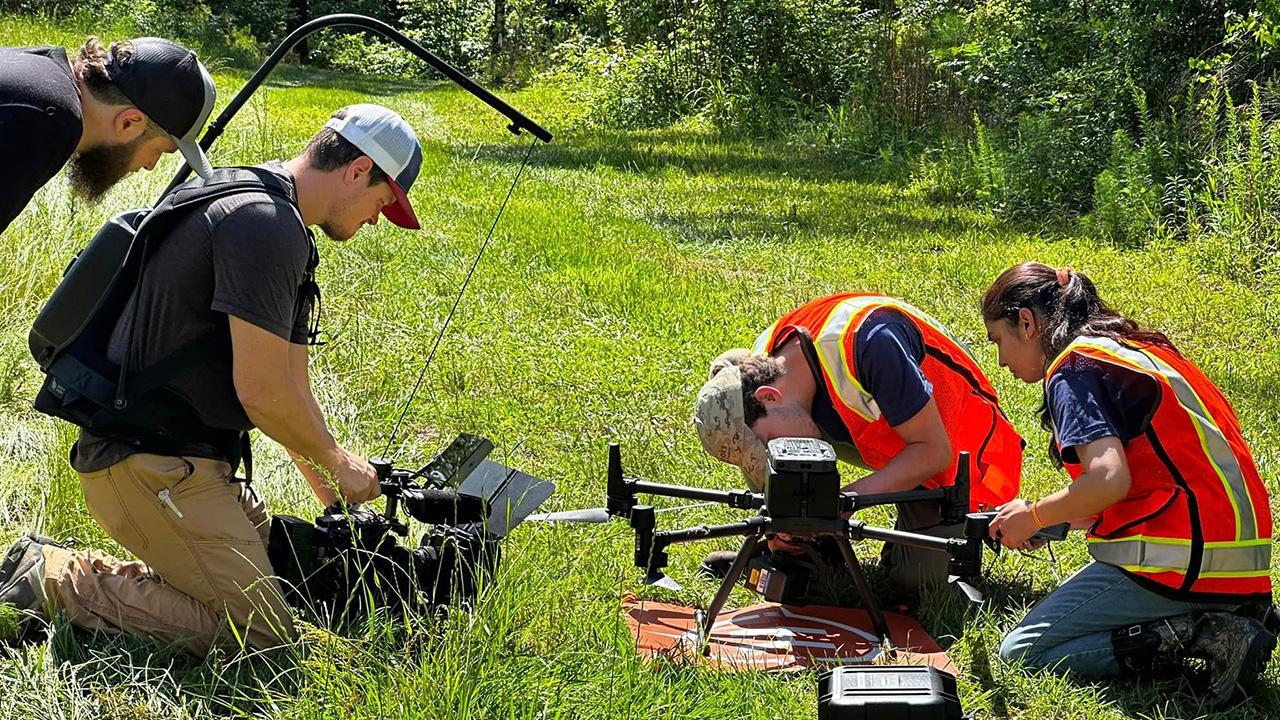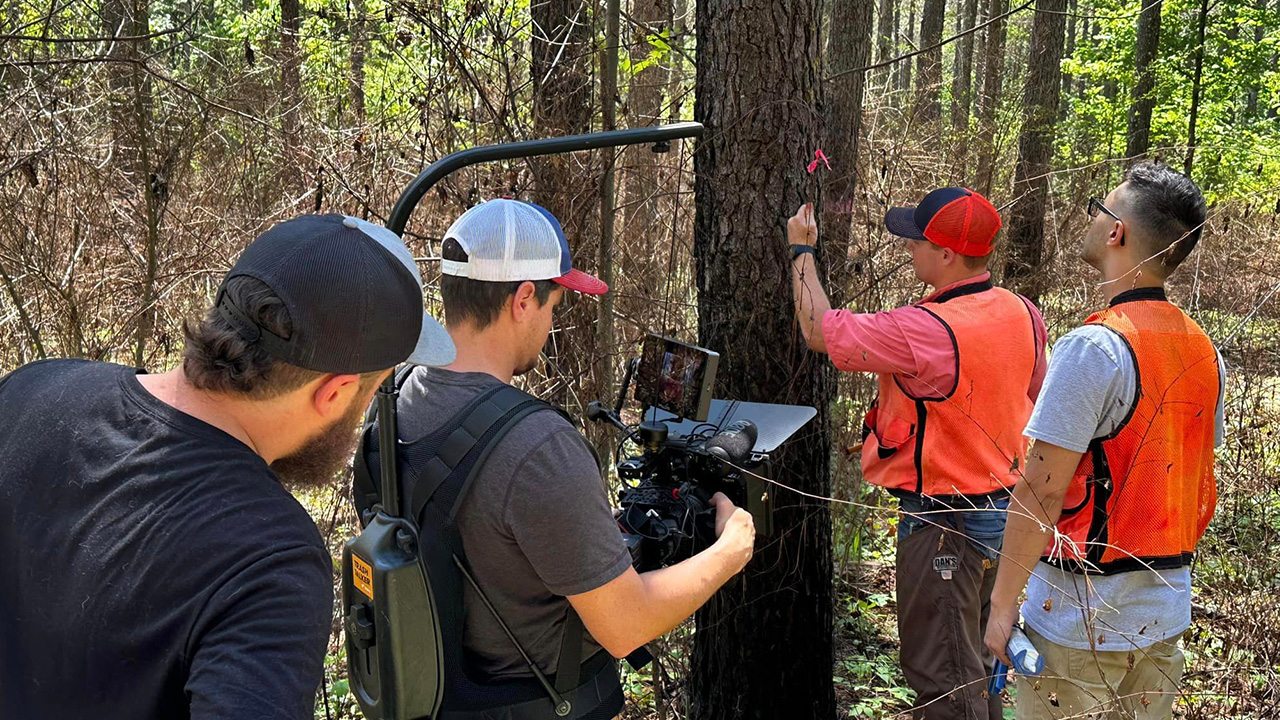content body

A film crew shoots footage as Emily Carter of the U.S. Forest Service explains soil profiles to doctoral students Sharmin Toa, Temitope Folorunso and Jaden King, master’s student Emmanuel Nyarko, undergraduate researcher Drew Conway and interns Skyler Alvarez, Caleb McCrory and Lillian Avis.
A team of Auburn University researchers was front and center on an international stage this past June.
Attendees at the International Union of Forest Research Organizations (IUFRO) World Congress in Sweden this summer learned how faculty in Auburn’s College of Forestry, Wildlife and Environment (CFWE) are attacking the problem of brown spot needle blight, a disease running rampant in the southeast U.S. with the potential to impact forestry markets around the world.
The research was highlighted in a video produced for the world congress, because despite the escalating concern over insect pests and fungal diseases, which can have devastating impacts on the forest industry, solutions remain elusive.
The college’s aim is to assist forest product manufacturers, landowners and government entities in keeping trees healthy by sharing science-based findings and solutions. The impact of this research is immense, as the forestry industry contributes $34 billion to Alabama’s economy. In an interview for the video, Kris Bradley, a registered forester and land manager, stressed how vital this project is to the state and the Southeast.
“This pathogen has a potential to cripple our forest industry,” he said. “Just in my little slice of the world, thousands of acres I manage are either dead or dying.”
Several CFWE faculty members are currently working on the project, which was funded by a $2.1 million grant from the U.S. Forest Service. Lori Eckhardt, a professor of forest health, is the primary investigator leading the research. She’s working closely with colleagues Janna Willoughby, an assistant professor of conservation genetics who is using genome sequencing to study the fungal pathogen responsible for the disease, and Lana Narine, an assistant professor of remote sensing and modelling who is using drone-based imagery and LIDAR to assess forest health and disease spread.
Eckhardt’s focus is on finding ways to manage brown spot needle blight in loblolly pines, the most common pine tree in Alabama. In longleaf pines, the disease is easily managed through controlled burns, but since loblolly pine needles are located at the tops of the trees, anywhere from 30 to 100 feet off the ground, controlling the spread of the disease is more challenging.
She has enlisted the help of five graduate students, eight undergrads and four interns to help take samples from trees and soil and conduct research in different areas ranging from plant physiology and genetics to GIS mapping, soil health and environmental impact.
This project is the perfect illustration of how Auburn’s land-grant mission is carried out through simultaneously conducting research, educating students and disseminating solutions to problems through outreach.
“As the study moves along, we want to keep the community involved and be their main resource of what have we learned so far,” Eckhardt said in the video. “We do this through meetings and workshops, and we meet with landowners, the Alabama Forest Commission and other folks. We even have a website dedicated to this project.”
Eckhardt says the students involved are having such a good time they may not understand how important their work is.
“They’re coming to the field, they’re having a really good time, they’re doing their research, they’re making new friends, they’re making new contacts through the landowners and the companies they meet,” she said. “But, in essence, what they’re doing is really going to affect how trees are managed across the state of Alabama and how it impacts the economy.”






